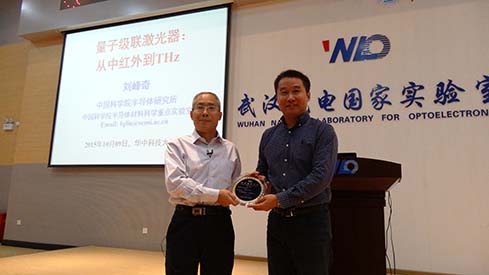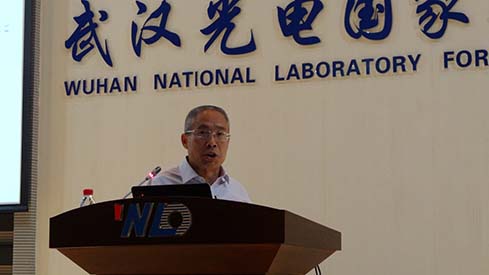WUHAN, China (October 9, 2015) - Wuhan Optoelectronics Forum No. 102 was successfully held in Auditorium A101 at Wuhan National Laboratory for Optoelectronics (WNLO) in the morning of October 9.
Quantum cascade lasers (QCLs) are semiconductor laser sources based on intersubband electron transitions in multiple quantum well systems. Their unique operation principle and good performance have established themselves as the leading tunable coherent semiconductor source in the infrared and terahertz (THz) regimes. Despite eminent improvements obtained in the past years, the development of mid-infrared and THz-QCLs with high power, high efficiency, high spectral performance and good beam quality is still a challenging task. Here, we report some results on design, growth, fabrication, and operation of mid-infrared and THz-QCLs in the Institute of Semiconductors, Chinese Academy of Sciences. Representative mid-infrared QCLs with high power and small divergence, the first quantum dot cascade laser based on two-step strain compensation active region design, and THz-QCLs with emitting power of > 1 W are demonstrated.
Feng-Qi Liu received the M.S. degree in solid state physics from University of Science and Technology of China, in 1990, and the Ph.D.degree in condensed matter physics from Nanjing University, China, in 1996. He joined Institute of Semiconductors, Chinese Academy of Sciences, in 1996, where his work has concentrated on the MBE-growth of low-dimensional semiconductor materials and the development of high-performance mid-infrared and terahertz quantum cascade lasers.

